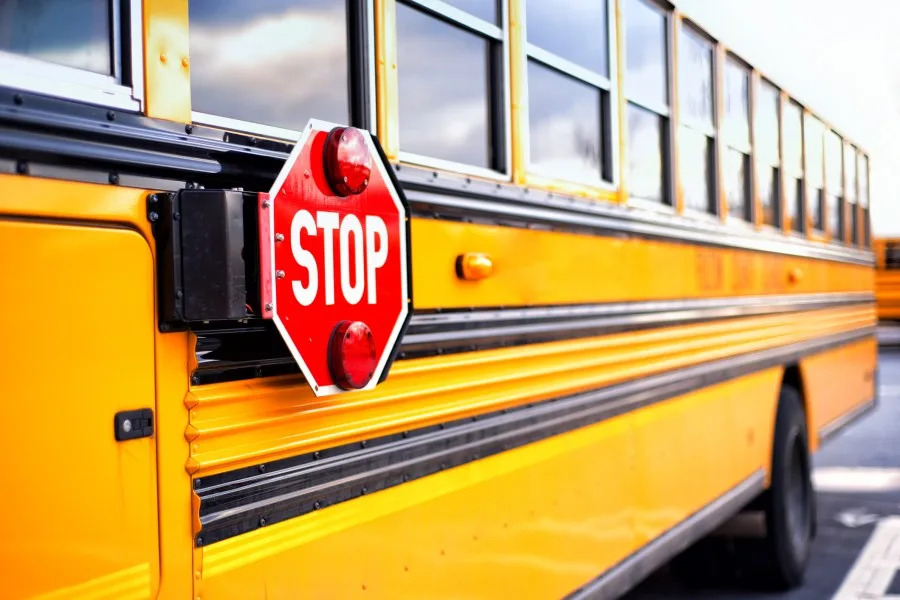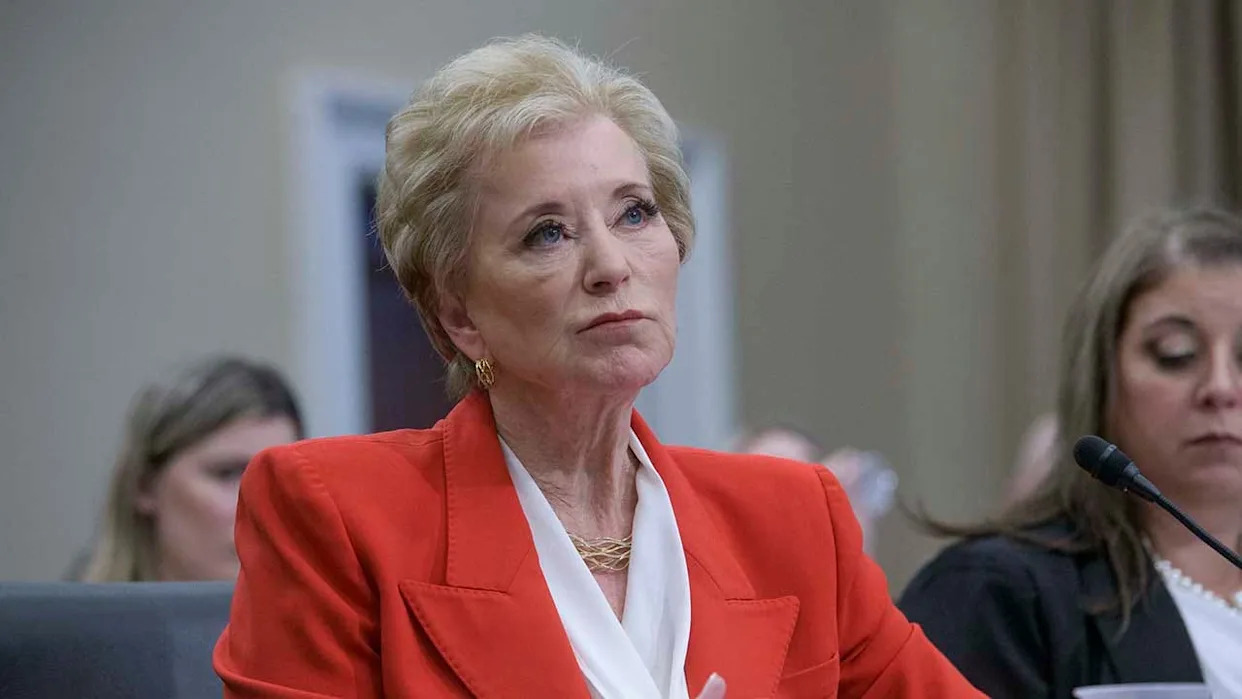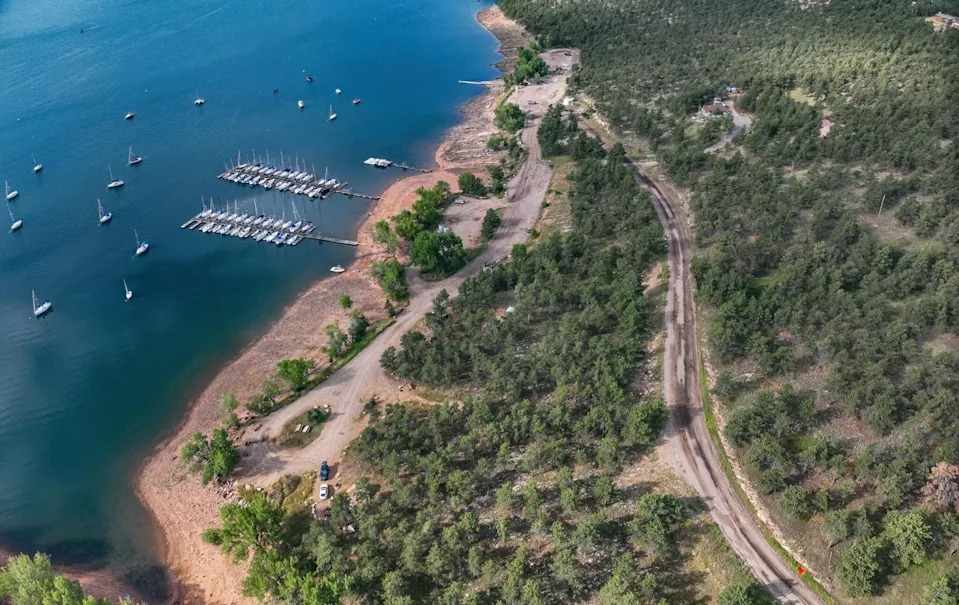
An Amtrak passenger train crosses the James River in Richmond. (Photo by Taber Bain/Flickr/Creative Commons License 2.0)
Amtrak Virginia’s ridership numbers continue to show increases, according to the Virginia Passenger Rail Authority. Ending fiscal year 2025, more than 1.4 million passengers traveled on state supported rail service — an increase of 4.8% compared to the same time last year. It was the region’s highest ridership recorded since the service launched in 2009, with one roundtrip route between Washington D.C. and Lynchburg.
“The growth that we are continually seeing in our Amtrak Virginia ridership just confirms our work to expand passenger rail in Virginia,” said DJ Stadtler, executive director of VPRA in a press release.
One of those riders is Justin Doyle, who doesn’t consider himself a train commuter. But the Richmond resident does consider himself a frequent rider and takes every chance he can to hit the rails.
“We’ve done a lot of traveling via Amtrak. We visited Washington, D.C., Philadelphia, New York. We were in Boston earlier this year,” he said. “We flew to Montreal at the end of 2024 and then rode the Adirondack route back to New York’s Penn Station, which was a really wonderful, very scenic trip.”
Doyle cites unpredictable traffic on Interstate 95 and environmental concerns as reasons why he opts to take the train whenever possible. But spending quality time with his six-year-old son during train rides has been the biggest benefit.
“We set up in the cafe car, play a card game called ‘Loose Caboose.’ It’s a train-themed game, which is fun,” he said. “My son and I really enjoy that.”
It’s through his frequent trips that Doyle has noticed an increase in the number of passengers.
“There have been instances where finding a seat has been challenging on Sunday afternoons in particular,” he said. “It’s really people coming back from northeast destinations, back to Richmond.”
Sam Runner rides the train up to D.C. from his home in Richmond for work every couple of months, catching the train at the Main Street Station at 5:30 a.m. He heads back later in the afternoon. He too has seen an increase in passengers.
“Because I’m getting on the train when it’s first leaving it’s not as crowded,” Runner said. “But the train I take back, I noticed a very big shift of the train being a lot more crowded.”
Growing pains
While the uptick in riders sometimes causes both Doyle and Runner to have a harder time finding seats, there are changes coming, said Danny Plaugher, executive director of Virginians for High-Speed Rail and the Virginia Transit Association.
“Virginia is kind of leading the nation in investing in passenger rail, maybe outside of California,” said Plaugher. “We’re putting somewhere in the range of $4 to $5 billion into our rail infrastructure.”
Plaugher said starting in 2020, Virginia Amtrak has bought hundreds of miles of corridors of track between Washington D.C. and Richmond, as well in the City of Petersburg to the North Carolina border.
The expansions are part of a VPRA initiative called “Transforming Rail in Virginia” which seeks to double Amtrak state-supported service while also increasing service on the Virginia Railway Express route from Fredericksburg Line and Manassas Line, all with the goal of getting more people out of their cars and onto trains. The increase in service, such as adding more trains during rush high peak travel times will ease the pain of looking for empty seats.
Changes in federal funding
Possible bumps in the future of rail travel and infrastructure improvements in the commonwealth could come from how federal dollars are awarded in the form of grants stemming from changes in a landmark infrastructure law enacted during the previous presidential administration.
According to The Architects Newspaper, infrastructure projects to improve stations, tunnels and bridges are in jeopardy because of a $2.3 billion cut in the Bipartisan Infrastructure Law, which was created under the administration of former President Joe Biden. In addition, there will be a 91% cut to the federal administration and discretionary funding for Amtrak’s national network, which includes the northeast corridor, has been eliminated, according to a report by the House Democrats Appropriations Committee.
Because of the uncertainty of federal dollars, Amtrak recently cut 450 positions, according to Reuters, as a way to cut annual costs by $100 million.
“In regards to future federal funding, that’s our big initiative and something that we’re meeting and having conversations with our delegation about,” Plaugher said. “The current Infrastructure and Jobs Act expires at the end of this fiscal year, FY26, and so the future of service transportation as well as the rail grants is kind of up in the air.”
Plaugher said Virginia needs a strong federal partner when it comes to the next service transportation bill that he expects to see in 2026.
“We’re unique in that we’re one of the few states with dedicated resources to invest in passenger rail,” he said. “But we’ve gone it alone for a long time and done everything we can. We’re kind of tapped out and we need a service transportation bill that has robust federal grants included in it.”
Current projects that have already been approved, such as the Long Bridge Project, which will create two new track railroad bridges over the Potomac River from Alexandria into D.C., have not been affected by federal budget cuts, said Gerica Goodman, director of external affairs at the Virginia Passenger Rail Authority.
“We are fully funded in current phases of projects and we’ll continually assess our needs with other projects that may come up,” Goodman said. “Smaller projects that may need funding, we’ll continue to apply for their regular grants.”
President Donald Trump’s administration has made sweeping cuts across all sectors of the federal government, triggering the elimination of thousands of jobs and undercutting previously dedicated funding for many agencies. Inside the Federal Railroad Administration,165 employees or 14% took early buyouts, also called deferred resignation, according to Politico. To Plaugher, it’s troubling.
“Obviously that’s concerning because these are the people who approve plans, sign contracts, reimburse grants, and whatnot,” said Plaugher.
Despite the possible disruptions in service, part time commuter Runner hopes the trains in the commonwealth keep coming.
“‘The more rail service, the better’ is something that I believe in,” he said. “For me, it’s one of those things where rail built this country. So I’d like to see it be improved and restored to some of that greatness.”







Comments